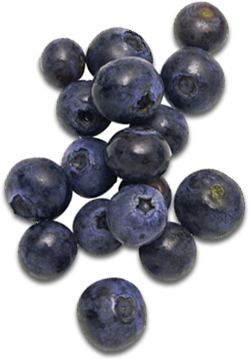no items to display
Spring Fruit Feature: Cherries
Happy National Cherry Month! I love nearly all fruits, but cherries hold a special place in my heart. In fact, I just planted two cherry trees in my front yard this fall! What better time of year to celebrate these red, heart-shaped jewels than February, the month of romance and love?
Cherries come in many varieties but there are two main types: sweet and sour. The sweet ones — such as the classic bing cherry — are typically darker, with flesh that’s maroon to almost black. They are wonderful to eat fresh, with no accoutrements. The sour ones — such as Montmorency — are smaller and bright red. These are generally used in cooking, frequently in pies or sauces.
I don’t know if you’ve heard the news about cherries, but recent research has uncovered that they have numerous health benefits. Sweet cherries contain a healthy dose of potassium, which may help maintain healthy blood pressure. Tart varieties are one of the few natural sources of melatonin, a hormone that regulates the sleep-wake cycle. In fact, they’ve been shown to improve sleep (so you might want to eat them closer to bedtime). One study suggests tart cherries can also help speed up metabolism and reduce weight gain.[1] Anyone else excited for cherry season, coming up this June?
What exactly makes cherries so good for you? Without a doubt, the phyto-nutrients they contain — including anthocyanins, also found in berries — are partially responsible. However, cherries are also a good source of several essential nutrients.
One cup of fresh, pitted sweet cherries provides:
· 18% of the daily value (DV) for vitamin C, which aids immune function and is needed for the health of connective tissue
· 10% of the DV for potassium, an electrolyte that maintains fluid balance in cells and is critical to a healthy heart
· 3 grams of fiber, which is necessary for normal digestion and helps reduce the risk of heart disease
· Only 97 calories!
One cup of fresh, pitted sour cherries provides:
· 40% of the DV for vitamin A, necessary for healthy vision, immune strength, and the integrity of skin and mucous membranes
· 26% of the DV for vitamin C
· 2 grams fiber
· Just 77 calories!
While fresh cherries won’t be in season for a few months, frozen and dried cherries are available year-round. That means you don’t have to wait for summer to enjoy this tasty and nutritious fruit. Frozen cherries make a delicious addition to smoothies, and dried cherries add zip to salads, granola, and baked goods.
Once those juicy beauties arrive at your local farmers’ market, your family might just eat them all plain before you have time to cook with them. But if you have any left over, try this scrumptious-sounding salad recipe.
Sour cherry recipes often contain a lot of sugar because of their mouth-puckering tartness. Here’s a cherry preserve recipe that features raw, local honey instead of refined sugar.
Another kind of cherry you might not see fresh on the store shelves, unless you live in Texas or Florida, is the acerola cherry. The frozen or dried pulp of this superfruit is widely used in health foods and supplements because of its astounding vitamin C content. A single cherry contains 134% of the DV for vitamin C! Juice Plus+ Orchard Blend harnesses the nutritional goodness of acerola cherry, in addition to nine other fabulous fruits.
Are you inspired to eat more cherries? Do you have any recipes you’d like to share?
[1] Ansel K. Cherry nutrition benefits: learn about the health benefits of cherries, from a better night’s rest to a trimmer tummy to managing certain diseases. Eating Well. 2012 May/Jun. http://www.eatingwell.com/nutrition_health/nutrition_news_information/cherry_nutrition_benefits






